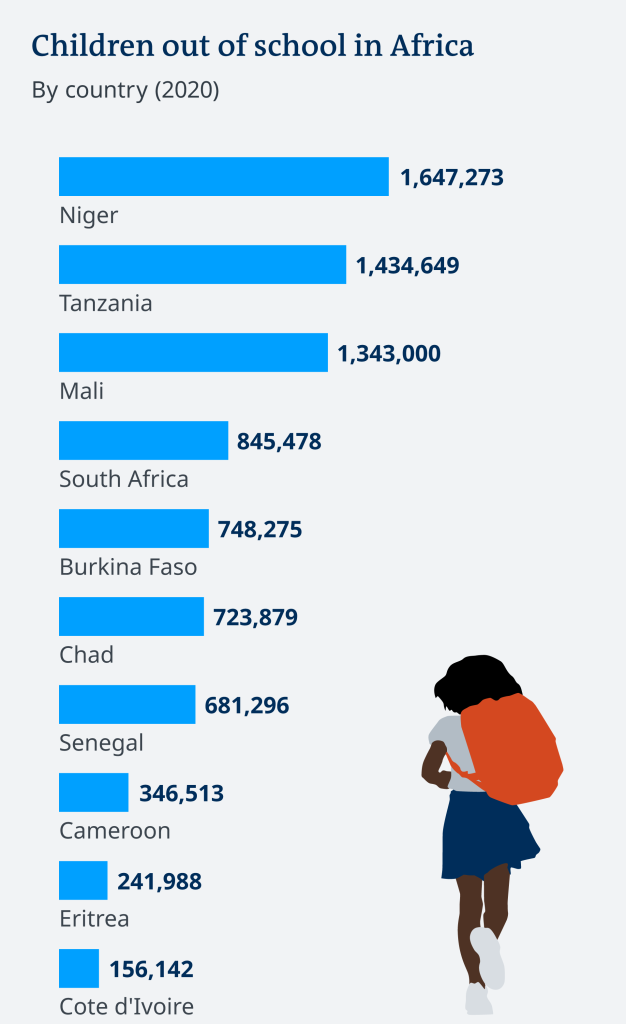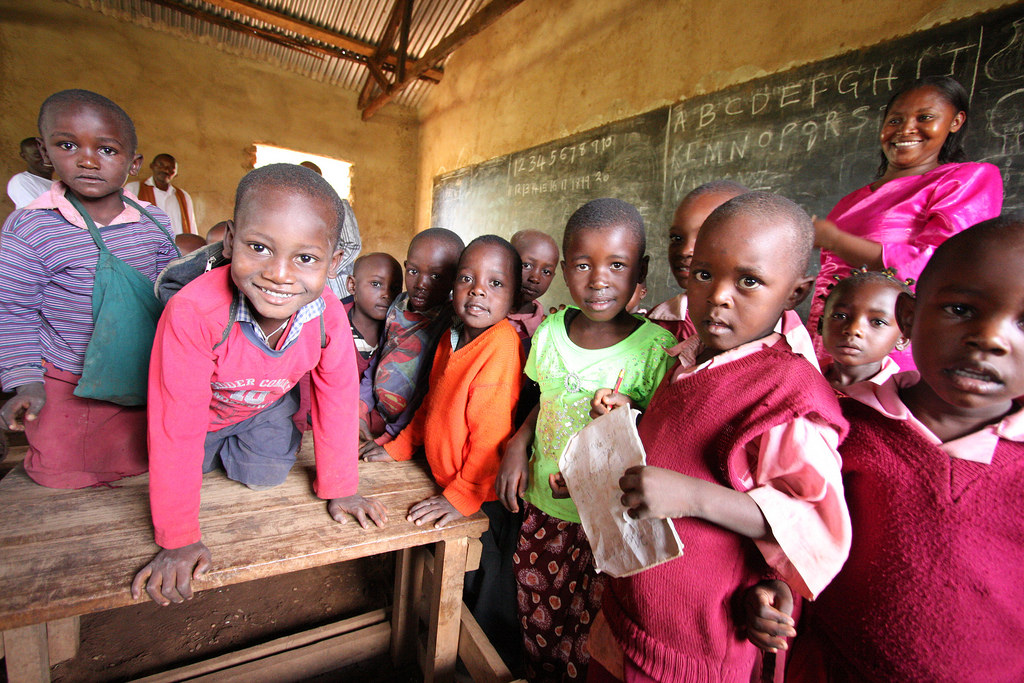Education is considered a universal human right, as well as an issue of public good and responsibility. However, there are still many, particularly children in developing African countries, who do not enjoy this right. Sub-Saharan Africa, in particular, faces the highest rate of education exclusion globally, with nearly 60% of youth aged 15 to 17 out of school. In this article, we delve into the challenges, efforts, and hopes of activists in Sub-Saharan Africa who are fighting to change these alarming statistics.
The Alarming Situation
In Sub-Saharan Africa, the dream of education remains elusive for many. While some who can afford it send their children to private schools in urban areas, this is not an option for those in rural areas or from poorer families. According to the United Nations Education, Scientific and Cultural Organization (UNESCO), over one-fifth of African children between the ages of 6 and 11 are not in school, and nearly 60% of youth between the ages of 15 and 17 are not enrolled.
Gender Disparities
The education of girls is of particular concern in Sub-Saharan Africa. Shockingly, 9 million girls between the ages of 6 and 11 will never attend school, compared to 6 million boys. By the time they reach adolescence, girls have a 36% exclusion rate compared to 32% for boys.
Identifying the Obstacles

Many factors contribute to this education crisis in Sub-Saharan Africa. One of the glaring issues is the lack of proper school infrastructure. It is not uncommon to find schools without toilets, desks, or even chairs. This lack of basic amenities makes it incredibly challenging for students to learn effectively.
The Challenge of Distance
For many children, especially in rural areas, accessing a school is a significant challenge due to the sheer distance they have to cover. Umaru Harisa, a primary school student in Nigeria, highlighted this issue, saying, “There are no toilets, desks, or even chairs in my school,” and also lamented the long distance he has to travel to get to school.
Attitudes Toward Education
Differing attitudes toward the value of formal education also pose a major problem. Some communities are skeptical of Western-style learning, and in some cases, there’s a belief that girls don’t need an education. These attitudes, combined with regional instability, create a challenging environment for education to thrive.
Tackling Dropout Rates
In South Africa, at least 40% of all students drop out of school before completing grade 12, with girls making up the majority of this group. The consequences of youth prematurely leaving school are severe, leading to a cycle of unemployment and poverty.
The Personal Impact
Akhona Wanda, a teen mother in South Africa, shared her regret, saying, “I should have continued with my studies instead of falling pregnant.” Her mother, Nontathu Wanda, emphasized the importance of education for her daughter’s future, highlighting the critical role education plays in breaking the cycle of poverty.
The Need for Holistic Support
To combat these challenges, girls like Akhona need support beyond the classroom. However, most African countries lack comprehensive programs to empower girls holistically.
The Isibindi Ezikoleni Initiative
One commendable initiative is the “Isibindi Ezikoleni” program in South Africa, roughly translating to “Courage in Schools.” Organized by the National Association of Childcare Workers, this program focuses on addressing the root causes of disengagement from school, preventing students from dropping out.
The Importance of Engagement
Engagement is key to resolving the education crisis in Sub-Saharan Africa. Nomvula Piri, a South African youth worker, emphasizes the importance of constantly engaging with children who drop out of school and encouraging them to return and continue their studies. She has helped several pregnant schoolgirls, including Akhona, return to class after giving birth.
Bringing Light to the Darkness
In northern Nigeria’s Minchika village, local authorities are making efforts to encourage children to stay in school. Yunus Musa, the co-founder of the Give North Education campaign, believes that getting African children back to school is key to society’s progress, especially in developing nations. He passionately states, “Only education brings my people out of the darkness.”
Conclusion
The battle for education in Sub-Saharan Africa is ongoing, but activists and communities are dedicated to bringing about change. While challenges persist, hope remains that with concerted efforts and support, education can become a reality for all children in the region.
FAQs
- What is the current state of education in Sub-Saharan Africa?
- Sub-Saharan Africa faces the highest rate of education exclusion globally, with nearly 60% of youth aged 15 to 17 out of school.
- What are the main obstacles to education in the region?
- Challenges include the lack of proper school infrastructure, long distances to schools, and differing attitudes toward formal education.
- What initiatives are being taken to combat dropout rates in Africa?
- Programs like “Isibindi Ezikoleni” in South Africa focus on addressing the root causes of disengagement from school to prevent dropouts.
- Why is girls’ education a particular concern in Sub-Saharan Africa?
- Girls in the region face higher exclusion rates, and cultural attitudes sometimes discourage their education.
- How can individuals and organizations support education in Sub-Saharan Africa?



